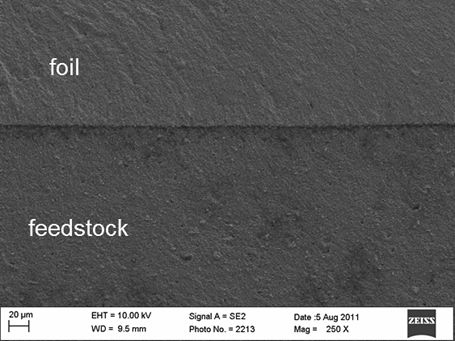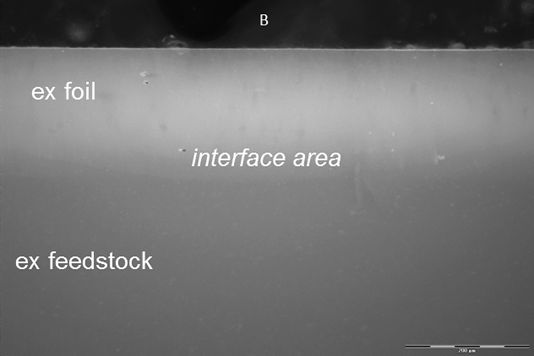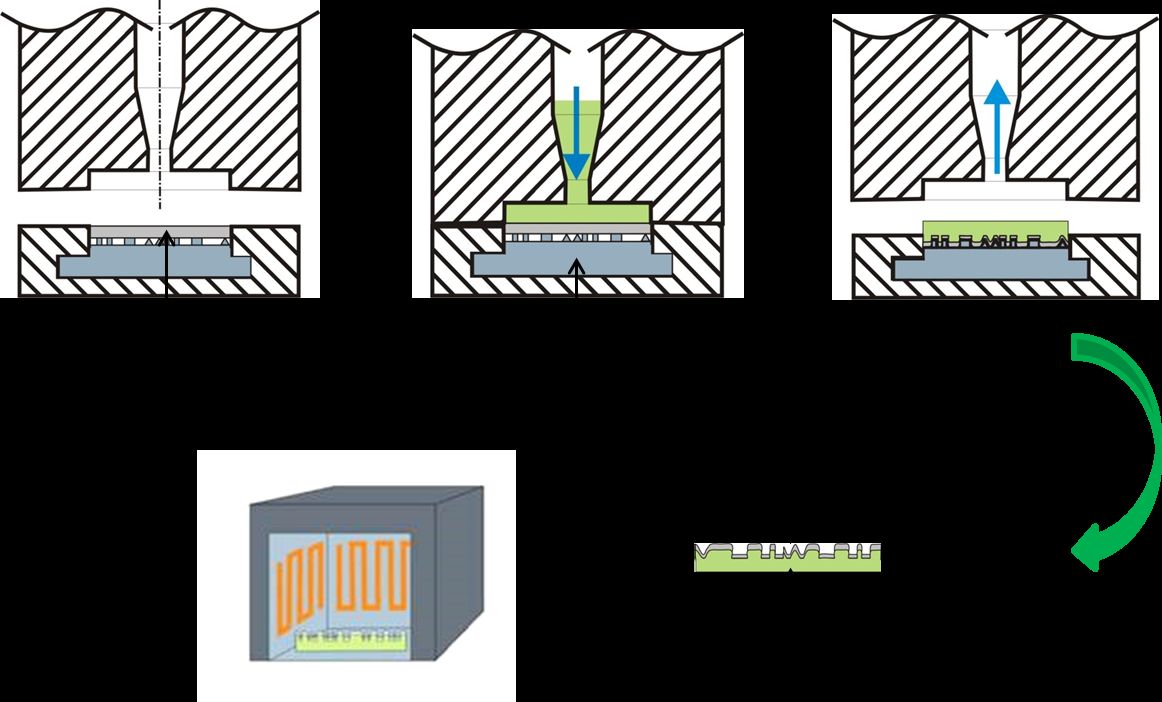Insert injection molding (inmold labeling - IML) has been enjoying great popularity for some time as a special variant of macroscopic plastics processing. In this process, a - mostly printed - foil is inserted into an injection mold and then filled backwards with polymer melt. By combining the foil and molding compound, printed or colored components can be produced cost-effectively.
|
|
|
If the IML process is combined with powder injection molding, not only can printed ceramic or metal parts be produced, but high-quality materials can also be applied to the surface of a complex shaped object. In addition, we have set ourselves the goal of e.g. microstructuring the film surface during rearward injection in order to achieve better impression results by filling the foil - with nanopowders, for example. In contrast to typical PIM feedstocks, films produced by slip casting can be loaded with higher fill levels of even the smallest powders. |
First results with ZrO2-filled films and feedstocks:
 |
 |
| Co-sintering: Adjustment of the T, t parameters to the sintering properties of both powders, so that a seamless bond is created.. |

